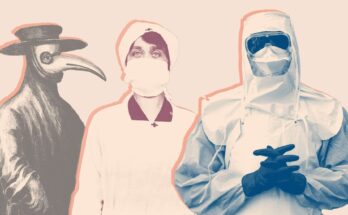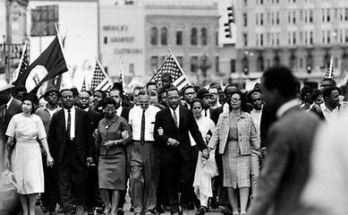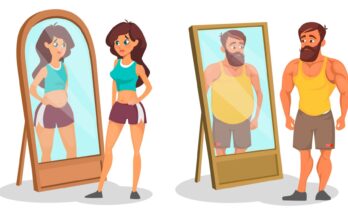Introduction
The AIDS epidemic, which began in the early 1980s, changed the course of history and had a profound impact on millions of lives globally. It brought to light not only a devastating health crisis but also highlighted issues of discrimination, healthcare inequality, and the power of community activism. This retrospective explores the origins of the epidemic, the incredible activism it sparked, and the significant medical breakthroughs that have turned what was once a death sentence into a manageable chronic condition.

The Early Days of the AIDS Epidemic
Also Read The Great Hair Debate: Why Natural Hair Still Faces Discrimination
The Mysterious Illness
In the early 1980s, medical professionals in the United States began noticing a troubling pattern: young, healthy men were suddenly falling ill with rare infections and cancers. This mysterious illness, initially termed GRID (Gay-Related Immune Deficiency), was soon recognized as a new disease that weakened the immune system.
The Naming of AIDS
By 1982, the Centers for Disease Control and Prevention (CDC) had adopted the term Acquired Immunodeficiency Syndrome (AIDS) to describe the condition. This name underscored the disease’s nature of weakening the immune system, making sufferers vulnerable to opportunistic infections.
The Spread of HIV
Identifying HIV
In 1983, researchers discovered the virus responsible for AIDS: the Human Immunodeficiency Virus (HIV). This breakthrough allowed for a better understanding of how the virus spread and the mechanisms it used to attack the immune system.
Modes of Transmission
HIV was found to be transmitted through specific body fluids, including blood, semen, vaginal fluids, and breast milk. Common modes of transmission included unprotected sex, sharing needles, and from mother to child during childbirth or breastfeeding.
Also Read Nailing the Perfect Gift: How to Choose Based on Personality Types
The Impact on Communities
The LGBTQ+ Community
The AIDS epidemic had a profound impact on the LGBTQ+ community, particularly gay men. The initial association of AIDS with gay men led to significant stigma and discrimination, exacerbating the suffering of those affected.
Minority Communities
Minority communities, particularly African Americans and Hispanics, were disproportionately affected by the AIDS epidemic. Socioeconomic factors, limited access to healthcare, and social stigma contributed to higher rates of infection and mortality in these populations.
The Role of Activism
The Rise of Activist Organizations
In response to the government’s slow and inadequate response to the crisis, activist organizations like ACT UP (AIDS Coalition to Unleash Power) emerged. These groups used direct action, protests, and advocacy to demand better treatment, research, and support for people living with AIDS.
Key Figures in the Movement
Activists like Larry Kramer, Cleve Jones, and Peter Staley became prominent figures in the fight against AIDS. Their tireless efforts raised awareness, influenced policy changes, and garnered public support for those living with HIV/AIDS.
Medical Breakthroughs
The Development of Antiretroviral Therapy (ART)
One of the most significant medical breakthroughs in the fight against AIDS was the development of antiretroviral therapy (ART). Introduced in the mid-1990s, ART transformed HIV from a fatal disease into a manageable chronic condition by suppressing the virus and preventing its replication.
Pre-Exposure Prophylaxis (PrEP)
In recent years, Pre-Exposure Prophylaxis (PrEP) has emerged as a powerful tool in preventing HIV infection. PrEP is a daily medication that significantly reduces the risk of contracting HIV for individuals at high risk.
The Ongoing Fight
Challenges in Access to Treatment
Despite medical advancements, access to treatment remains a significant challenge, particularly in low-income countries. High costs, limited healthcare infrastructure, and social stigma continue to hinder efforts to control the epidemic globally.
The Importance of Education and Prevention
Education and prevention remain critical components of the fight against HIV/AIDS. Comprehensive sex education, regular testing, and the promotion of safe sex practices are essential in reducing new infections.
The Role of Global Organizations
The World Health Organization (WHO)
The World Health Organization (WHO) has played a pivotal role in coordinating the global response to the AIDS epidemic. Through initiatives like the 90-90-90 targets, WHO aims to ensure that 90% of people living with HIV know their status, 90% of those diagnosed receive sustained ART, and 90% of those on ART achieve viral suppression.
The United Nations (UN)
The United Nations has also been instrumental in the global fight against AIDS, with UNAIDS leading efforts to end the epidemic. UNAIDS works to unite governments, communities, and organizations in a coordinated response to HIV/AIDS.
Personal Stories of Survival and Activism
Stories of Hope
Countless personal stories of survival and activism have emerged from the AIDS epidemic. These stories highlight the resilience and determination of individuals and communities in the face of adversity.
The Power of Community Support
Community support has been crucial in the fight against AIDS. Support groups, fundraising events, and public awareness campaigns have played a significant role in providing care and reducing stigma.
The Evolution of HIV/AIDS Research
Early Research Efforts
Early research efforts focused on understanding the virus and its mechanisms. Initial studies laid the groundwork for developing diagnostic tests, treatments, and prevention strategies.
Advances in Treatment and Prevention
Research has led to significant advances in treatment and prevention, including the development of ART, PrEP, and potential vaccines. Ongoing research continues to explore new ways to combat HIV and improve the lives of those affected.
The Stigma and Discrimination
Overcoming Stigma
Stigma and discrimination have been major barriers in the fight against HIV/AIDS. Efforts to overcome stigma have included public education campaigns, legal protections, and advocacy for the rights of people living with HIV/AIDS.
Legal and Social Changes
Legal and social changes have played a crucial role in improving the lives of people living with HIV/AIDS. Anti-discrimination laws, increased funding for research and treatment, and greater social acceptance have all contributed to progress in the fight against AIDS.
The Future of HIV/AIDS
Towards a Cure
The ultimate goal in the fight against HIV/AIDS is finding a cure. Researchers are exploring various strategies, including gene editing, immunotherapy, and innovative drug therapies, to achieve a functional cure or complete eradication of the virus.
Sustainable Development Goals (SDGs)
The fight against HIV/AIDS is also linked to the United Nations’ Sustainable Development Goals (SDGs), particularly Goal 3: Good Health and Well-Being. Achieving these goals requires a continued commitment to research, education, and access to healthcare.
Conclusion
The AIDS epidemic is a powerful reminder of the impact of disease on society and the importance of activism, research, and compassion in the face of a global health crisis. While significant progress has been made in the fight against HIV/AIDS, the journey is far from over. Continued efforts in education, prevention, treatment, and research are essential to ultimately ending the epidemic and ensuring a healthier future for all.
FAQs
1. What is the difference between HIV and AIDS?
HIV (Human Immunodeficiency Virus) is the virus that causes AIDS (Acquired Immunodeficiency Syndrome). HIV attacks the immune system, and if left untreated, it can lead to AIDS, the final stage of HIV infection where the immune system is severely damaged.
2. How is HIV transmitted?
HIV is transmitted through specific body fluids, including blood, semen, vaginal fluids, and breast milk. Common modes of transmission include unprotected sex, sharing needles, and from mother to child during childbirth or breastfeeding.
3. What are the symptoms of HIV/AIDS?
Early symptoms of HIV infection may include flu-like symptoms such as fever, fatigue, and swollen lymph nodes. As the infection progresses, individuals may develop more severe symptoms and opportunistic infections that characterize AIDS.
4. How can HIV be prevented?
HIV can be prevented through safe sex practices, regular testing, and the use of preventive medications like Pre-Exposure Prophylaxis (PrEP). Avoiding sharing needles and ensuring blood products are safe are also important prevention measures.
5. Is there a cure for HIV/AIDS?
Currently, there is no cure for HIV/AIDS. However, antiretroviral therapy (ART) can effectively manage the virus, allowing individuals to live long, healthy lives. Ongoing research is focused on finding a cure and improving treatment options.


